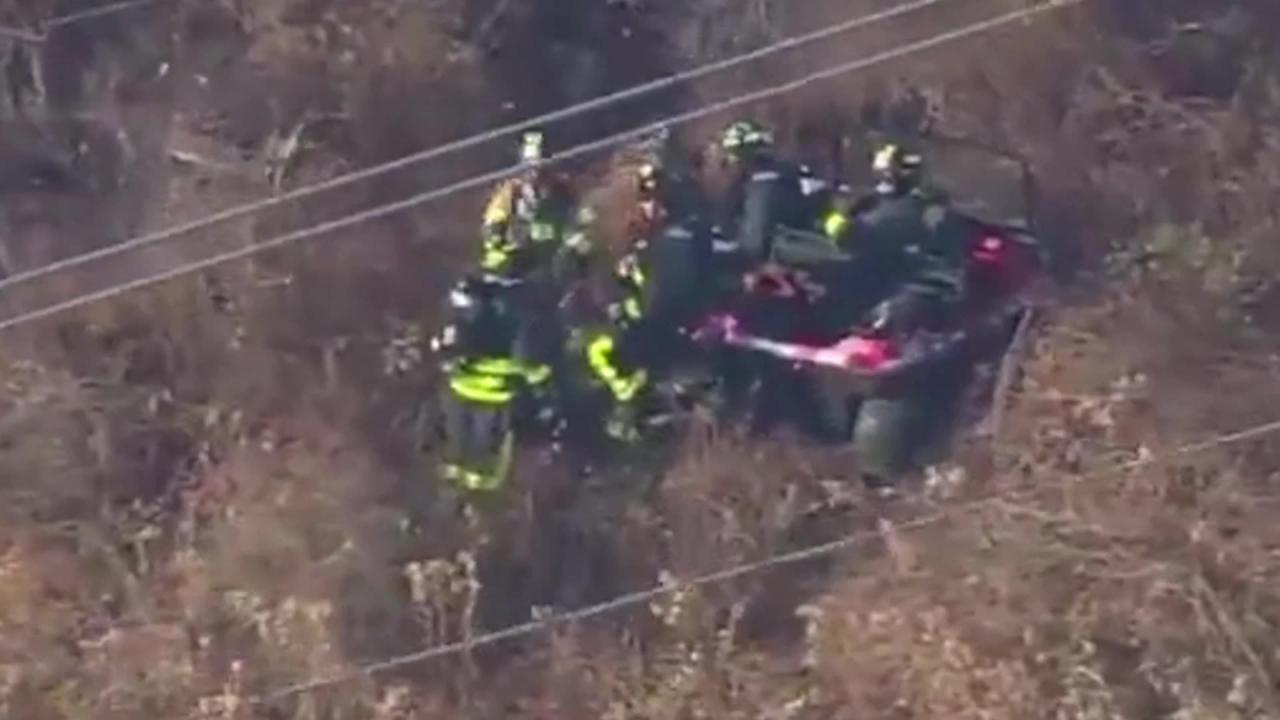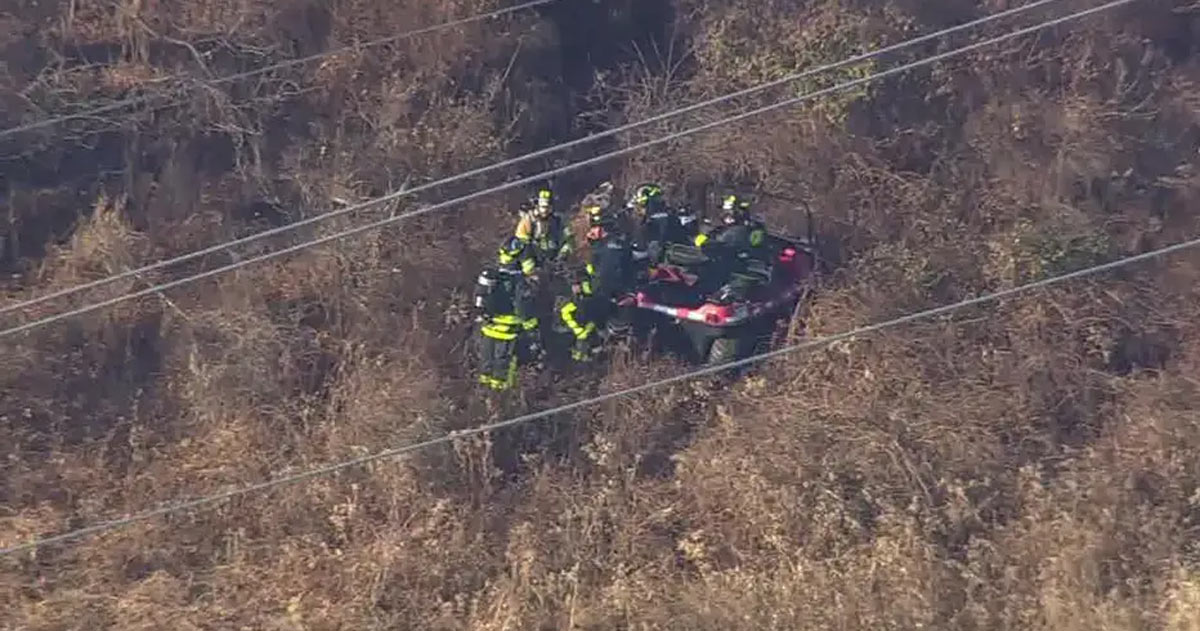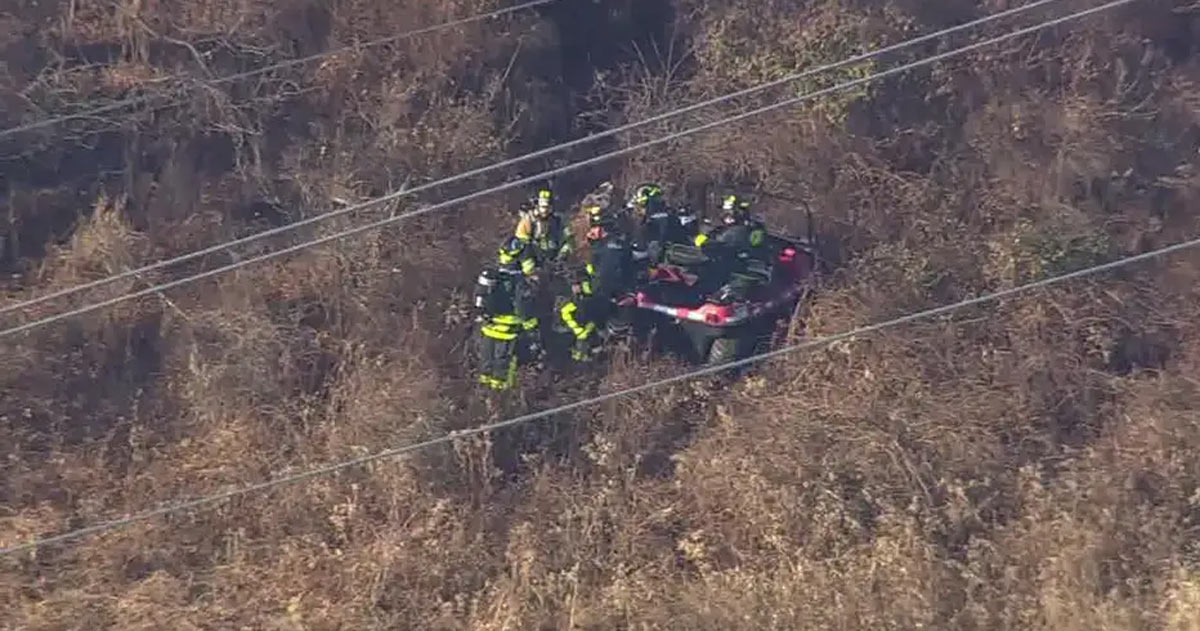Drone crashes in New Jersey present a compelling case study in the evolving landscape of unmanned aerial vehicle (UAV) technology. This analysis delves into the frequency, causes, and consequences of these incidents, examining both the technological and regulatory aspects. We explore the various types of drones involved, the impact on the economy and society, and offer insights into potential improvements to safety protocols and regulations.
From analyzing crash data across New Jersey’s diverse geographical landscape – encompassing bustling urban centers and tranquil rural areas – to examining the role of pilot proficiency and weather conditions, we aim to provide a nuanced understanding of this critical issue. The study also includes illustrative examples of notable crashes, highlighting lessons learned and emphasizing the need for continuous improvement in drone safety practices.
Recent drone crashes in New Jersey have raised concerns about safety and regulations. Understanding the causes behind these incidents is crucial, and thankfully, resources exist to help. For instance, you can find information on solutions to similar drone-related issues by checking out this helpful article: drones over new jersey solved. Ultimately, addressing these challenges will help prevent future drone crashes in New Jersey.
Drone Crashes in New Jersey: A Comprehensive Overview
New Jersey, with its diverse geography and increasing drone usage, experiences a notable number of drone crashes annually. This report analyzes the frequency, causes, types of drones involved, regulatory aspects, and the broader economic and social impacts of these incidents. The aim is to provide a comprehensive understanding of this emerging issue and suggest potential improvements to enhance drone safety within the state.
Frequency and Locations of Drone Crashes, Drone crashes in new jersey
Analyzing drone crash data across New Jersey reveals significant variations in incident rates across different counties and geographical areas. Urban areas, with their complex airspace and potential for obstacles, tend to experience higher crash rates compared to rural regions. However, factors such as weather patterns and pilot experience also significantly influence the frequency and distribution of crashes.
| County | Year | Number of Crashes | Causes (if known) |
|---|---|---|---|
| Essex | 2019 | 5 | Pilot error (3), Mechanical failure (2) |
| Bergen | 2020 | 7 | Weather (2), Pilot error (3), Unknown (2) |
| Middlesex | 2021 | 3 | Mechanical failure (1), Collision with object (2) |
| Ocean | 2022 | 2 | Pilot error (1), Loss of signal (1) |
| Hudson | 2023 | 6 | Pilot error (4), Unknown (2) |
This data, while illustrative, highlights the need for further comprehensive data collection to accurately assess the geographical distribution of drone crashes in New Jersey and identify high-risk areas. Further investigation into specific contributing factors in each county would provide a more detailed understanding of the problem.
Causes of Drone Crashes in New Jersey
Drone crashes in New Jersey stem from a variety of factors, broadly categorized into pilot error, mechanical failure, and environmental conditions. Understanding these causes is crucial for developing effective safety measures.
- Pilot Error: This includes issues such as improper pre-flight checks, loss of situational awareness, exceeding operational limits, and inadequate pilot training.
- Mechanical Failure: This encompasses malfunctions in the drone’s components, including motors, propellers, batteries, and flight controllers. These failures can be due to manufacturing defects, wear and tear, or inadequate maintenance.
- Weather Conditions: Strong winds, heavy rain, snow, and fog can significantly impact drone stability and flight safety, leading to crashes.
Pilot experience and training are directly correlated with crash rates. Inexperienced pilots are more likely to make errors leading to accidents. Comprehensive training programs focusing on risk assessment, emergency procedures, and weather awareness are essential.
A flowchart depicting the decision-making process for drone pilots would incorporate pre-flight checks, weather assessment, risk mitigation strategies, and emergency protocols, ultimately minimizing the chance of a crash.
Types of Drones Involved in Crashes

The types of drones involved in crashes vary, ranging from small recreational drones to larger commercial models. Data on specific drone models frequently involved in incidents is limited publicly, hindering detailed analysis of potential design flaws. However, consistent reporting and investigation are crucial to identify such flaws.
- Recreational Drones: These smaller, less expensive drones are often involved in crashes due to less stringent safety features and potentially less experienced pilots.
- Commercial Drones: Larger, more sophisticated commercial drones are also involved in incidents, although often due to more complex operational scenarios and potential mechanical failures.
A comparison of safety features across different drone models would reveal significant variations in capabilities such as obstacle avoidance systems, GPS accuracy, and redundancy mechanisms. These features directly impact crash rates.
Regulatory Aspects and Safety Measures

New Jersey, like other states, has regulations governing drone operation. These regulations cover aspects such as registration, licensing, operational limitations, and airspace restrictions. However, improvements to these regulations are needed to enhance safety and address emerging challenges.
- Strengthening Pilot Training Requirements: Mandatory training programs that cover advanced topics like risk management and emergency procedures are needed.
- Improving Drone Technology: Encouraging the development and use of drones with enhanced safety features, such as improved obstacle avoidance systems, is crucial.
- Enhancing Public Awareness: Public education campaigns to raise awareness of drone safety regulations and best practices would help prevent accidents.
A comprehensive list of safety guidelines for drone pilots in New Jersey would include pre-flight checks (battery levels, GPS signal, wind conditions), emergency procedures (safe landing protocols, communication strategies), and adherence to airspace regulations.
Economic and Social Impact
Drone crashes in New Jersey incur significant economic costs, including damage to property, potential injuries, and the costs of investigations and repairs. The social impact includes public perception and trust in drone technology. A major drone crash in a populated area could have devastating consequences, impacting public confidence and potentially hindering the broader adoption of drone technology.
Economic costs can be estimated by analyzing the average repair costs of damaged property, medical expenses related to injuries, and the costs associated with investigations and legal proceedings. The social impact is more difficult to quantify but can be assessed through surveys and public opinion polls.
Recent drone crashes in New Jersey highlight the growing need for robust safety regulations in the burgeoning drone industry. The advancements in electric vertical takeoff and landing (eVTOL) aircraft, such as those developed by companies like archer aviation , are pushing the boundaries of drone technology, but also underscore the importance of addressing potential risks. Therefore, continued investigation into these New Jersey incidents is crucial to preventing future accidents.
Illustrative Examples of Notable Crashes

Analyzing specific incidents provides valuable insights into the causes and consequences of drone crashes. Three illustrative examples are detailed below:
- Example 1: A recreational drone crashed into a residential building in Hoboken due to pilot error (loss of control). The drone caused minor damage to the building’s exterior. The incident highlighted the importance of maintaining control and awareness of surroundings.
- Environment: Urban, densely populated area.
- Circumstances: Inexperienced pilot, windy conditions.
- Example 2: A commercial drone used for aerial photography crashed in a rural area of Sussex County due to a mechanical failure (motor malfunction). The drone was significantly damaged, but no injuries or property damage occurred. This incident underscores the need for regular maintenance and inspections.
- Environment: Rural, open area.
- Circumstances: Older drone model, inadequate maintenance.
- Example 3: A drone crashed near an airport in Teterboro due to a loss of GPS signal. The incident caused a temporary disruption to airport operations. This incident highlighted the critical importance of GPS reliability and adherence to airspace restrictions.
- Environment: Urban, near an airport.
- Circumstances: Interference with GPS signal, failure to adhere to airspace regulations.
In conclusion, the analysis of drone crashes in New Jersey reveals a complex interplay of technological factors, pilot behavior, and regulatory frameworks. While technological advancements continue to improve drone safety, the human element remains a crucial factor. Strengthening pilot training, improving regulatory oversight, and fostering a culture of safety are essential to mitigate the risks associated with drone operation and prevent future incidents.
The economic and social implications underscore the importance of proactive measures to ensure responsible and safe integration of drones into New Jersey’s airspace.
Questions and Answers: Drone Crashes In New Jersey
What are the most common penalties for violating drone regulations in New Jersey?
Penalties vary depending on the severity of the violation and can include fines, license suspension, or even criminal charges.
Is drone insurance mandatory in New Jersey?
While not always mandatory, drone insurance is highly recommended to cover potential damages or injuries caused by a crash.
Where can I find official information on New Jersey drone regulations?
Consult the New Jersey State Police website and the Federal Aviation Administration (FAA) website for the most up-to-date information.
Are there any designated drone flying zones in New Jersey?
Specific designated areas may exist; check the FAA’s B4UFLY app or website for airspace restrictions before flying.
